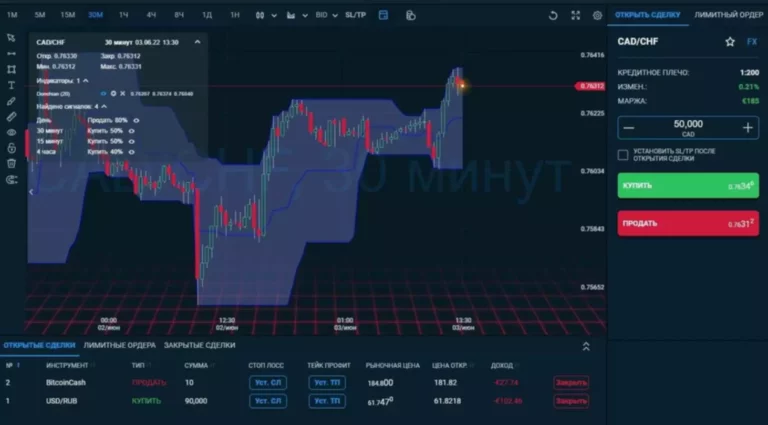“I suppose energetic managers have woken as a lot as the reality that the ETF structure is so in style, and many of them want to wrap their strategies in an ETF,” Yang says. “As far as what a stock-pickers market seems like, it’s mainly a low-volatility, low-correlation market with out plenty of drawdowns that instill concern into cash managers and pressure them to promote on the backside,” Colas said. Still, there might be hope ahead for energetic administration if market circumstances change in 2024. The S&P 500 index fund compounded a 7.1% annual acquire over the next 9 years, beating the typical returns of two.2% by the funds selected by Protégé Partners. There is not any right answer on which strategy is “better,” as it is extremely subjective and depending on the distinctive targets specific to each investor. Typically, you’ll be able to tell what an index fund or ETF invests in simply by way of the name.
- Your portfolio supervisor might know one of the best methodology of executing trades to find more opportunities for tax loss harvesting and reduce your tax legal responsibility.
- “You had to be proper there when the liftoff happened going into November and December,” Colas stated.
- More superior and skilled buyers, then again, may choose an active investing method that capitalizes on short-term fluctuations out there for the prospect to hit the jackpot.
- NerdWallet, Inc. is an unbiased writer and comparison service, not an funding advisor.
- Exchange-traded funds are a great option for buyers trying to benefit from passive investing.
- For most people, there’s a time and a place for lively and passive investing over a lifetime of saving for main milestones like retirement.
In equilibrium, the worth that managers create is captured for themselves by way of the charges. Meanwhile, the typical investor in US equity mutual funds just isn’t considerably worse off for investing actively relative to investing passively. Overall, what BvB describe approaches a GS equilibrium where the charges paid for manager perception is tantamount to the value of looking for information, and managers are capturing the worth arising from producing that data. Active investing is investing based mostly on an impartial assessment of every investment’s worth—essentially, attempting to decide on essentially the most enticing investments.
Our Services
Research by Wharton college and others has proven that, in many circumstances, “active” investment managers aren’t in a position to choose sufficient winners to justify their high fees. The broad thrust of this paper is that Sharpe’s proposition is not water-tight upon closer examination, and definitely shouldn’t be received as gospel. In particular, it should not be taken as adequate to help the general conclusion that listed funds ought to necessarily be favored over lively managers.
It can be a lot better framed round identifying conditions where one method might be most popular, or each ought to be utilized in tandem. To this impact, part 9 presents a framework that will help to determine situations the place active managers might form a half of the mix. Hopefully, this paper could help spur extra fruitful discussion and a few deeper thought. Active traders are inclined to examine their portfolios regularly and are constantly assessing property of their worth. They use their very own benchmarks for evaluating shares to hopefully identify investments that “beat the market,” or outperform standard index funds that monitor the S&P 500 or other major market indices. “Active investing can make sense when there’s a have to handle a very particular risk, problem, or opportunity,” he explains.
Moreover, passive funds are usually cheaper since they do not require almost as much upkeep or analysis as energetic funds do. The securities/instruments discussed on this materials will not be suitable for all traders. The appropriateness of a particular investment or technique will rely upon an investor’s particular person circumstances and objectives.
What’s Passive Investing?
An index fund – either as an exchange-traded fund or a mutual fund – is normally a fast way to buy the trade. It entails an analyst or dealer identifying an undervalued stock, buying it and using it to wealth. It’s true – there’s a lot of glamour find the undervalued needles in a haystack of stocks. But it includes evaluation and perception, knowledge of the market and a lot of work, particularly if you’re a short-term dealer. But in sure niche markets, he provides, like emerging-market and small-company stocks, the place belongings are much less liquid and fewer people are watching, it is potential for an energetic supervisor to identify diamonds within the rough.

Perhaps the best method to start investing passively is through a robo-advisor, which automates the method primarily based in your investing targets, time horizon and other personal components. Many advisors hold your investments balanced and reduce taxable positive aspects in various methods. You’d suppose an expert money manager’s capabilities would trump a primary index fund. If we have a glance at superficial efficiency outcomes, passive investing works best for many buyers. Study after study (over decades) exhibits disappointing results for energetic managers.
Passive Vs Energetic Investing
They are used for illustrative purposes only and don’t characterize the efficiency of any specific funding. Passive funds, also referred to as passive index funds, are structured to replicate a given index in the composition of securities and are supposed to match the performance of the index they track, no more and no much less. That means they get all the upside when a selected index is rising.

Our estimates are based mostly on past market performance, and past efficiency just isn’t a guarantee of future performance. ETFs are usually looking to match the performance of a specific inventory index, quite than beat it. That means that the fund merely mechanically replicates the holdings of the index, no matter they are. So the fund corporations don’t pay for costly analysts and portfolio managers. Of course, it’s possible to make use of both of those approaches in a single portfolio. For example, you can have, say, ninety percent of your portfolio in a buy-and-hold approach with index funds, whereas the rest might be invested in a couple of shares that you actively trade.
There is not any want to pick and monitor particular person managers, or selected amongst investment themes. Money is not a consumer of any funding adviser featured on this page. The data offered on this page is for instructional functions what are the pros and cons of active investing solely and is not intended as investment advice. The function of the wager was attributable to Buffett’s criticism of the high charges (i.e. “2 and 20”) charged by hedge funds when historic knowledge contradicts their ability to outperform the market.
And the distinction would only compound over time, with the lower-cost fund worth about $3,187 more after 20 years. Bankrate.com is an impartial, advertising-supported publisher and comparison service. We are compensated in change for placement of sponsored services, or by you clicking on sure links posted on our web site https://www.xcritical.com/. Therefore, this compensation could influence how, the place and in what order products seem inside listing categories, besides the place prohibited by regulation for our mortgage, home equity and other house lending products.
Despite being extra technical and requiring extra experience, lively investing often will get it mistaken even with probably the most in-depth basic evaluation to back up a given funding thesis. Active investing is the administration of a portfolio with a “hands-on” strategy with constant monitoring (and adjusting of portfolio holdings) by funding professionals. By strategically weighing a portfolio extra in direction of particular person equities (or industries/sectors) – whereas managing threat – an energetic supervisor seeks to outperform the broader market. Morgan Stanley Wealth Management is concerned in many companies that will relate to firms, securities or devices talked about on this materials.
What Are The Professionals And Cons Of Lively Vs Passive Investing?
Retirees who care most about income might actively choose specific shares for dividend growth whereas nonetheless maintaining a buy-and-hold mentality. Dividends are money payments from firms to buyers as a reward for proudly owning the stock. All this evidence that passive beats lively investing may be oversimplifying one thing much more advanced, nonetheless, because lively and passive methods are just two sides of the identical coin. Active mutual fund managers, each within the United States and abroad, consistently underperform their benchmark index.

Index funds unfold threat broadly in holding a representative sample of the securities in their goal benchmarks. Index funds monitor a goal benchmark or index somewhat than seeking winners. As a end result, they’ve lower fees and operating bills than actively managed funds. There’s more to the question of whether or not to invest passively or actively than that top stage image, however. Active strategies have tended to benefit investors more in certain investing climates, and passive methods have tended to outperform in others. For instance, when the market is volatile or the economy is weakening, active managers could outperform extra usually than when it is not.
This is principally because of the buy-and-hold strategy that enables investments to accumulate wealth over the long term. Although passive funds may underperform sooner or later in the market, this sometimes does not final very long. You can do lively investing yourself, or you possibly can outsource it to professionals through actively managed mutual funds and active exchange-traded funds (ETFs).
The markets could presently be working in path of such an equilibrium, having started from a 100% active method some decades ago. Of course, there are ways to actively make investments while not having to do all the exhausting work your self. There are lots of actively managed investment funds on the market, where traders give their cash to fund managers to speculate. However, the buy-ins for lots of actively managed funds are quite prohibitive to the typical retail investor. There are steep requirements to participate in a few of these funds, with $100,000 minimums, large charges and strict pointers.
But — take observe — it additionally means they get all the draw back when that index falls. Active investing requires analyzing an investment for value modifications and returns. Familiarity with elementary evaluation, similar to analyzing company financial statements, can additionally be important.